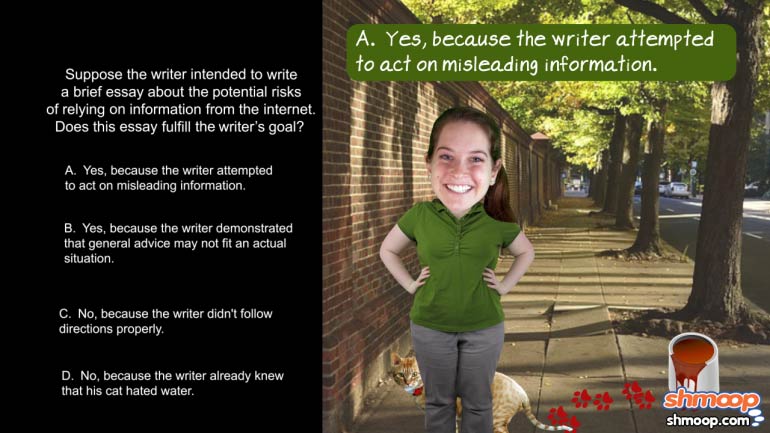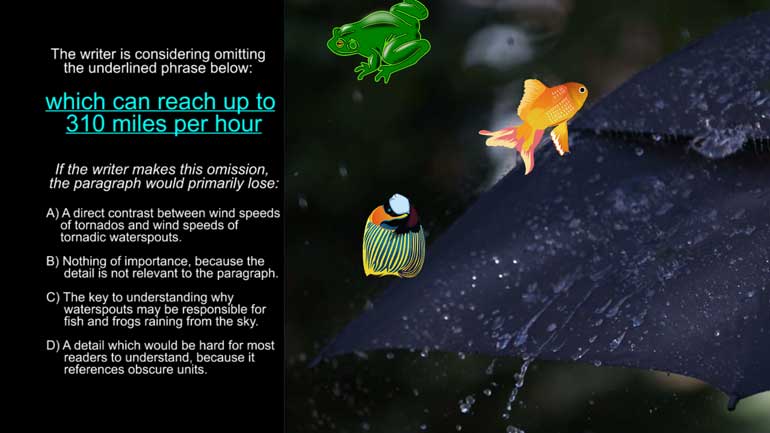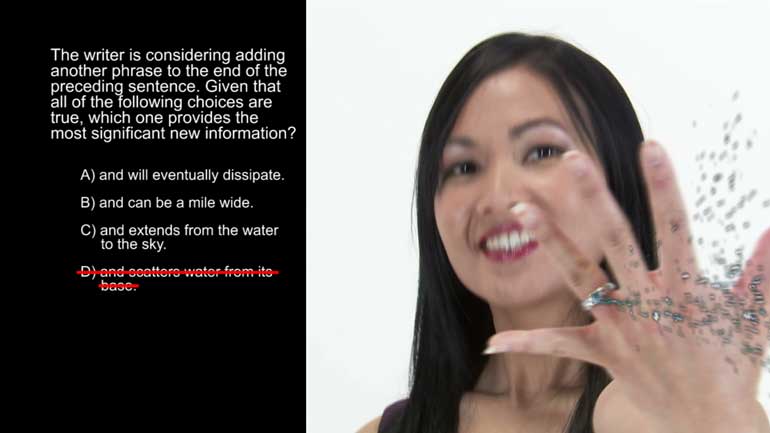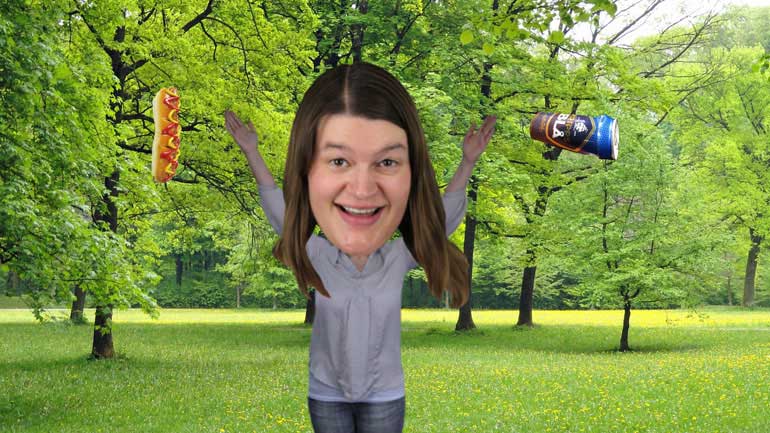ShmoopTube
Where Monty Python meets your 10th grade teacher.
Search Thousands of Shmoop Videos
Strategy Videos 7 videos
ACT English: Passage Drill 2, Problem 11. Which of the following sentences would make the most effective transition?
In this ACT English passage drill determine if the writer of the passage may or may not have achieved their proposed goal.
ACT English: Passage Drill Drill 3, Problem 2. What would the paragraph lose if the writer omits the underlined phrase?
ACT English 2.11 Passage Drill 236 Views
Share It!
Description:
ACT English: Passage Drill 2, Problem 11. Which of the following sentences would make the most effective transition?
Transcript
- 00:03
Here's your Shmoop du jour, brought to you by a sense of foreboding. Be afraid. Be very afraid.
- 00:32
The writer would like to insert an additional sentence here in order to create a better
- 00:35
transition to the following paragraph. Which of the following would make the most effective transition?
- 00:48
The clues here are the words "however" and "soon realized" in the first sentence of Paragraph
- 00:53
4, which signal a contrast to the previous sentence. Whichever sentence the writer chooses
Full Transcript
- 00:58
to cap Paragraph 3 with needs a different tone than Paragraph 4's slightly ominous
- 01:03
intro sentence. As soon as we hear that the cat doesn't like water, we know there's a bad moon on the rise.
- 01:09
So if we're going to get the shift in tone we're looking for, the new sentence needs to sound reasonably hopeful.
- 01:16
Choice (A) fails because it sounds too ominous. When we hear the sentence, "Little did I
- 01:20
know what lay ahead," it makes us think a dude's around the corner with a knife.
- 01:25
Or worse... a mother-in-law is dropping by for a surprise visit.
- 01:29
Anyway, (A) doesn't contrast the first sentence in Paragraph 4, so we can cross it out.
- 01:35
Choice (B) is a definite no because it's even more ominous than (A). It straight-up
- 01:39
says that something went "terribly wrong." Most people wouldn't call that positive
- 01:44
unless they're the sorts who like when bad things happen to them.
- 01:49
Choice © doesn't work because the flow of logic is off. The sentence that will directly
- 01:52
precede this new sentence is talking about all the stuff the writer got together in preparation
- 01:58
for his or her kitty-bathing adventure. Thus, it feels a bit disjointed to jump from there
- 02:02
to talking about how the cat needs to be cleaned as soon as possible.
- 02:06
Choice (D) wins the day with the sentence, "We were ready for business." This flows
- 02:11
logically from the preceding sentence and has the necessary positive connotation.
- 02:17
Anybody who can be positive about bathing a cat is either certifiable, or the most positive thinker of all time.
Related Videos
ACT English: Punctuation Drill 2, Problem 2. Where should the semi-colon be placed?
ACT English: Punctuation Drill 3, Problem 1. How should this sentence be changed so that it is grammatically correct?
ACT English: Punctuation Drill 3, Problem 2. How should we properly hyphenate the words in this sentence?
ACT English: Punctuation Drill 3, Problem 4. Which choice best formats this list of items?
ACT English: Punctuation Drill 2, Problem 1. Which choice of punctuation best completes the sentence?











